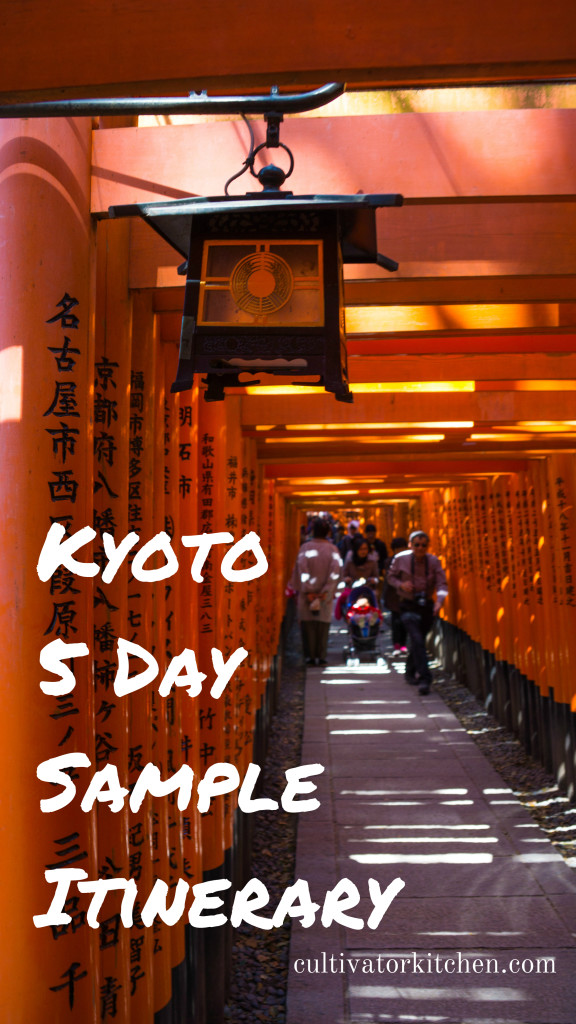
Kyoto is an enchanting and historic city, the capital of Japan for over 1,000 years before the move to Tokyo. Kyoto is the place to be if you really want to see the breadth of Japanese temple and shrine architecture, and taste the best the country has to offer of both traditional and modern cuisine. It is also very easy to traverse via public transportation, though sometimes I just prefer to walk!
In this 5-day itinerary you will see a giant bronze buddha, a golden temple, many zen gardens, and a castle with a moat. Feel free to mix-and-match days as they are interchangeable!! I’ve also added a ‘bonus’ day to the end if you have more time and a tips & tricks section on accommodations, currency, dietary restrictions, and how to get around.
Day 1: Northern Kyoto

Golden Temple Pavilion in Northern Kyoto
Golden Temple Pavilion (Kinkaku-ji)
Start the day at one of the most iconic sites in all of Japan, the Golden Temple Pavilion (Kinkaku-ji). This very important site is easily accessible by bus throughout the city, the name will be displayed in English on buses that go there. This brilliant 14th century zen temple is completely covered in gold leaf and it shines brightly in the morning sun. Linger as long as you like before exploring the Muromachi period style gardens.

Golden Temple Pavilion (Kinkaku-ji)
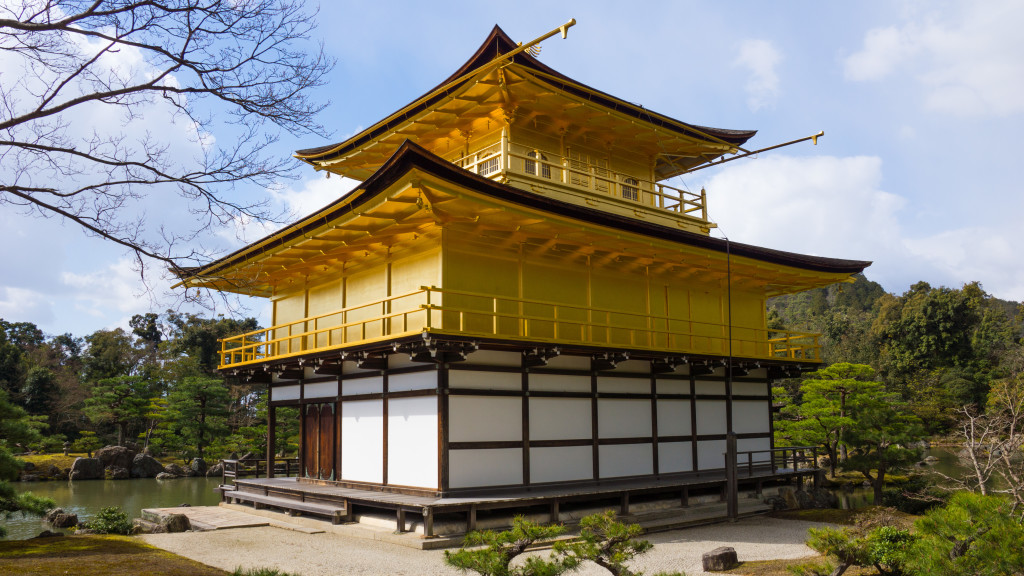
Golden Temple Pavilion on a sunny Kyoto morning
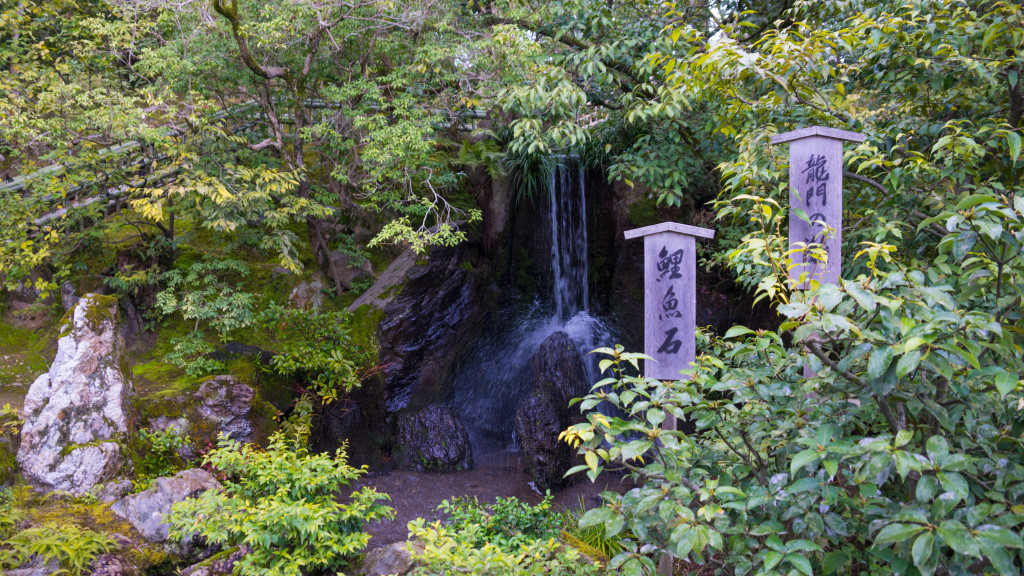
waterfall in the gardens at Kinkaku-ji
Ryoanji Zen Temple
After your morning tour of the Golden Temple Pavilion, walk down the kinukake (golden temple) road to Ryoan-ji, arguably the most famous Zen temple in Kyoto!

main hall at Ryoan-ji Zen Temple
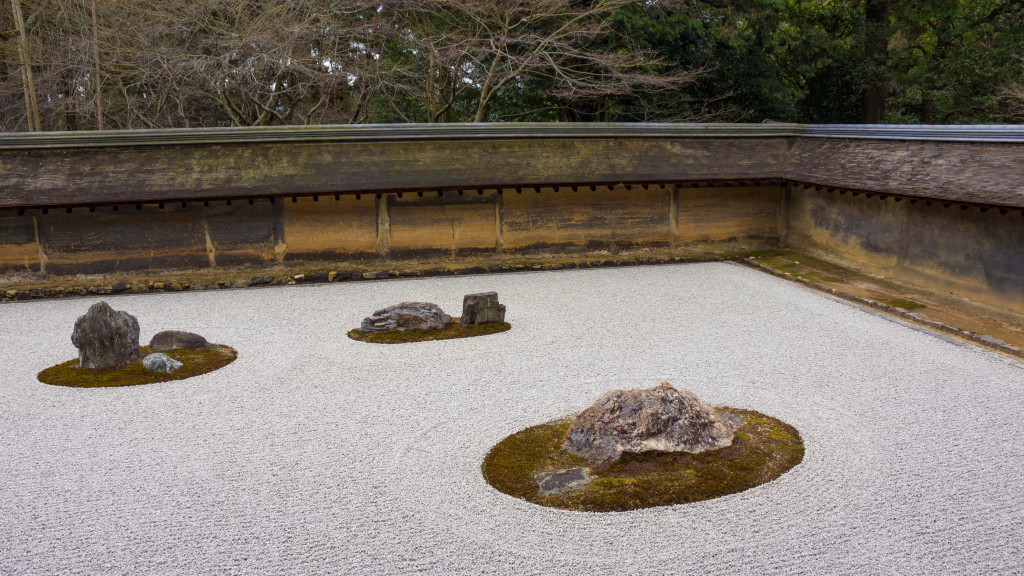
famous dry landscape garden (枯山水, karesansui)
Ryoan-ji Zen Temple is home to the most renowned dry landscape garden (枯山水, karesansui) in Kyoto, but also boasts expansive wet gardens that are quiet and ethereal. Definitely a peaceful escape from the tourists of the Golden Temple.

moss and fallen cherry blossom petals in the gardens
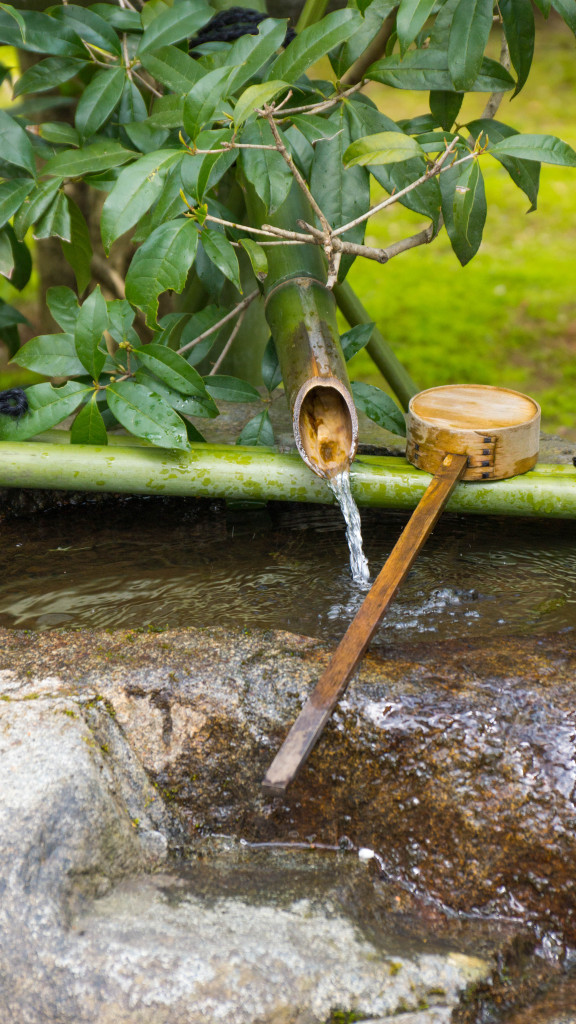
bamboo fountain
The ‘secret’ of the temple is that it also has a restaurant, Ryoanji Yudofu, where you can try traditional Japanese Buddhist monk cuisine (shojin ryori). Ryoanji Yudofu was one of the best meals I’ve ever had! Seating is floor-style and there is a garden view from each tatami mat. Since Buddhist cuisine in Japan is free of animal products it is friendly to vegans & vegetarians.
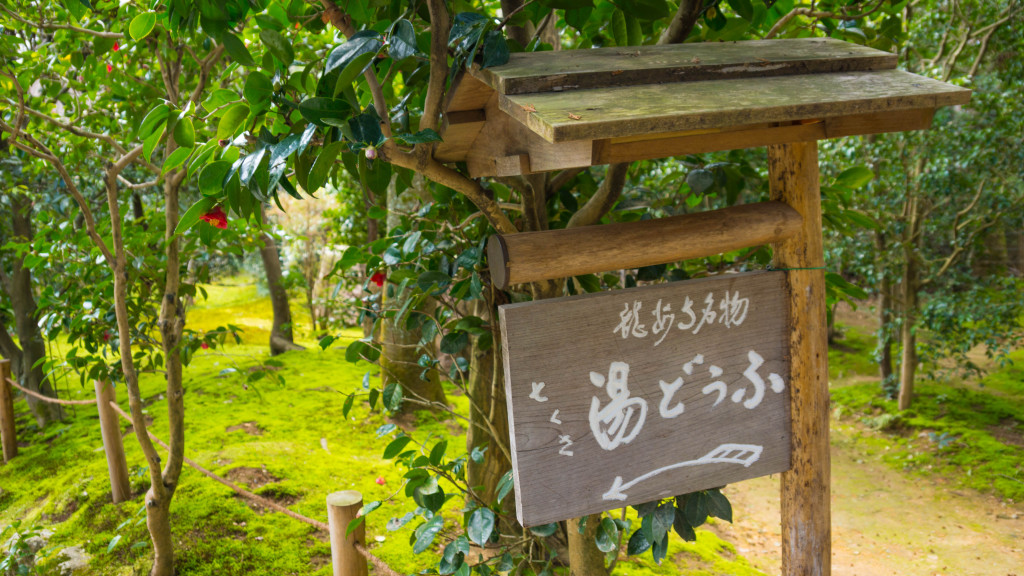
sign to Ryoanji Yudofu restaurant
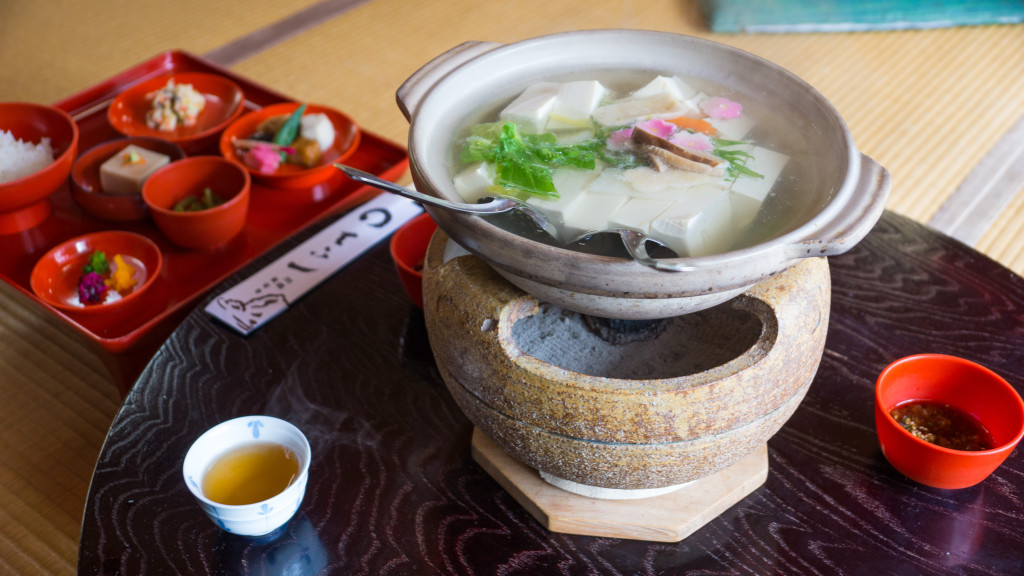
lunch set at Ryoanji Yudofu
For more details of what is in the Yudofu lunch set and for a tour of the Ryoanji Zen Temple, see my post: Ryoanji Yudofu: Zen Tofu with a View.
Kitano Tenmangu Shrine
After lunch at Ryoanji Yudofu take a bus or taxi to Kitano Tenmangu, a Shinto shrine in north-central Kyoto. Started in 947AD this old shrine is filled with history (and bull statues!) but it’s modern use is for good grades, so expect a lot of students there around exam time! If you visit in springtime make sure to enjoy the plum grove near the entrance, it’s an extra fee but worth it! Also, all spring and summer long there is an outdoor market with clothes, souvenirs and street food in front.
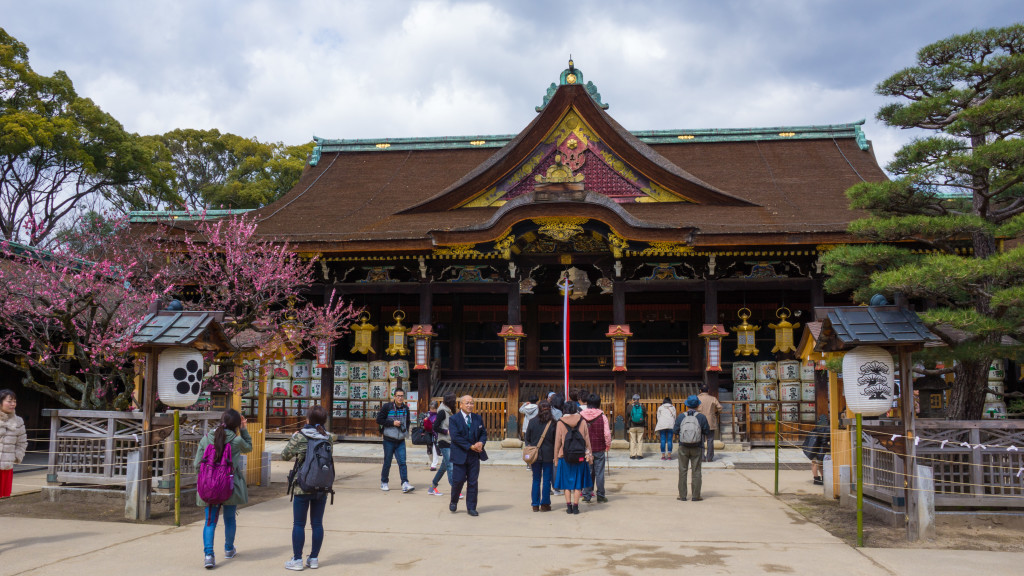
Kitano Tenmangu Shrine
Day 2: Central Kyoto
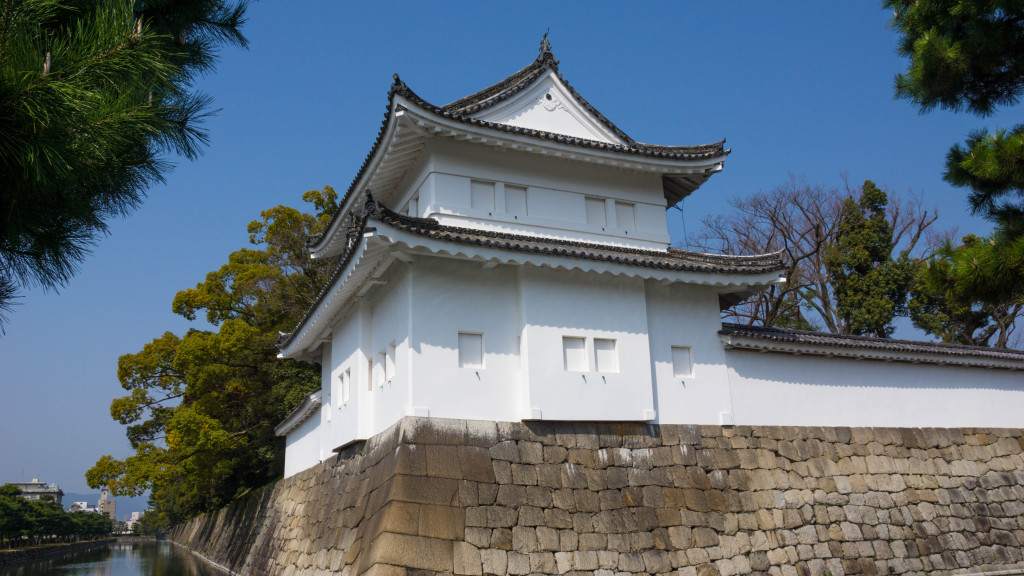
Nijo Castle in Central Kyoto
Nijo Castle
Begin the day at Nijo Castle, probably my favorite attraction in Kyoto! As you approach the gleaming white turrets, cross the moat by bridge, passing between the massive stone walls, you won’t believe this place exists in the middle of such a large city. Once inside, you’ve truly entered another world, and it’s the 17th century. Built for the shoguns of the era, it’s much more opulent than anything you can glimpse even at the Kyoto Imperial Palace tour. The first gate you will enter, the Karamon gate, is stunning in it’s colorful reliefs and gold-leaf detail.
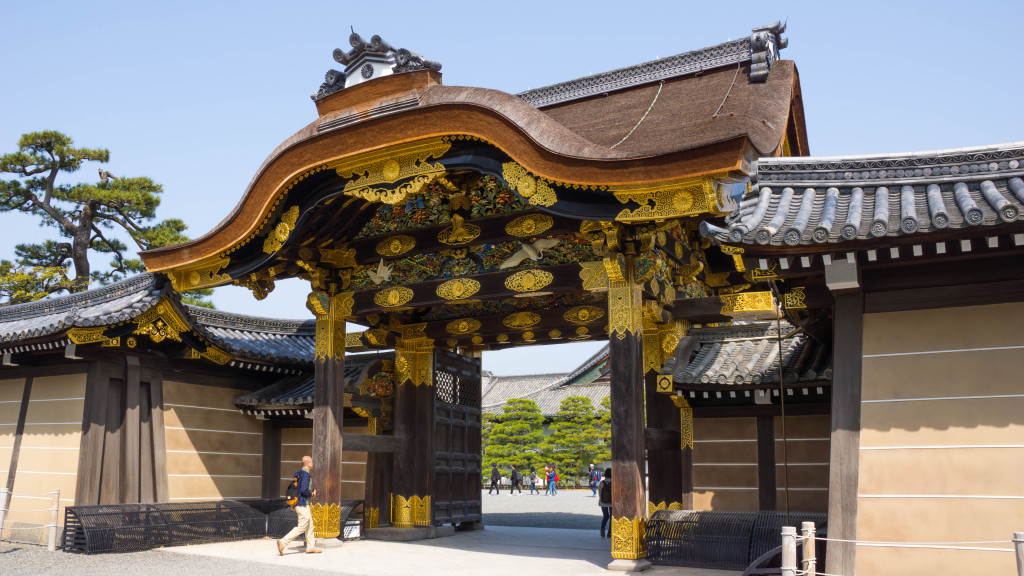
Karamon gate at Nijo Castle
Then you are free to roam the Ninomaru palace building with it’s screen-paintings, coffered ceilings, and martingale ‘singing’ floors. Afterwards, there are many impressive gardens to explore including a second palace building, wet gardens, cherry blossom grove, plum grove, and peach grove. I also spotted a number of citrus trees!
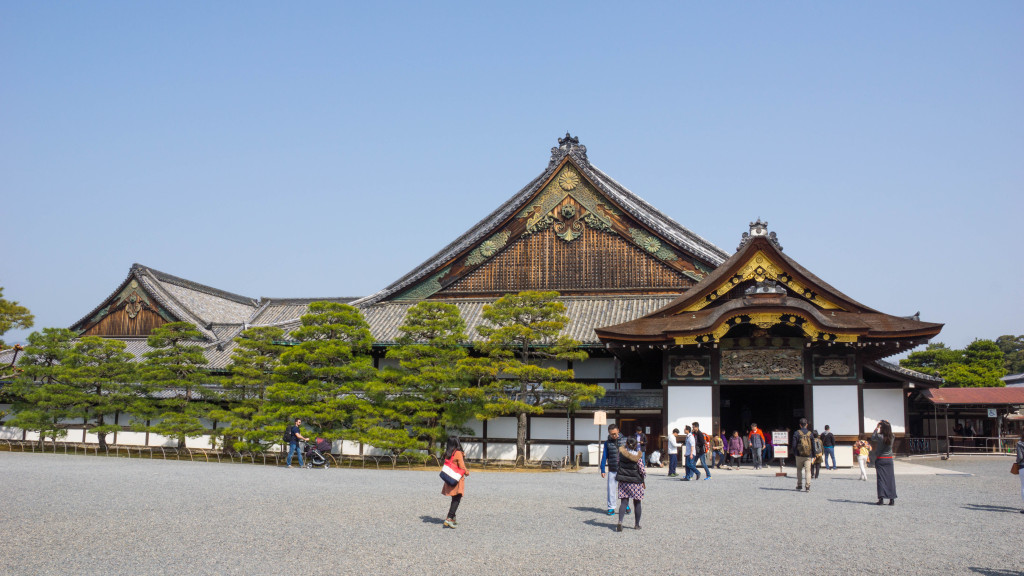
Ninomaru Palace at Nijo Castle
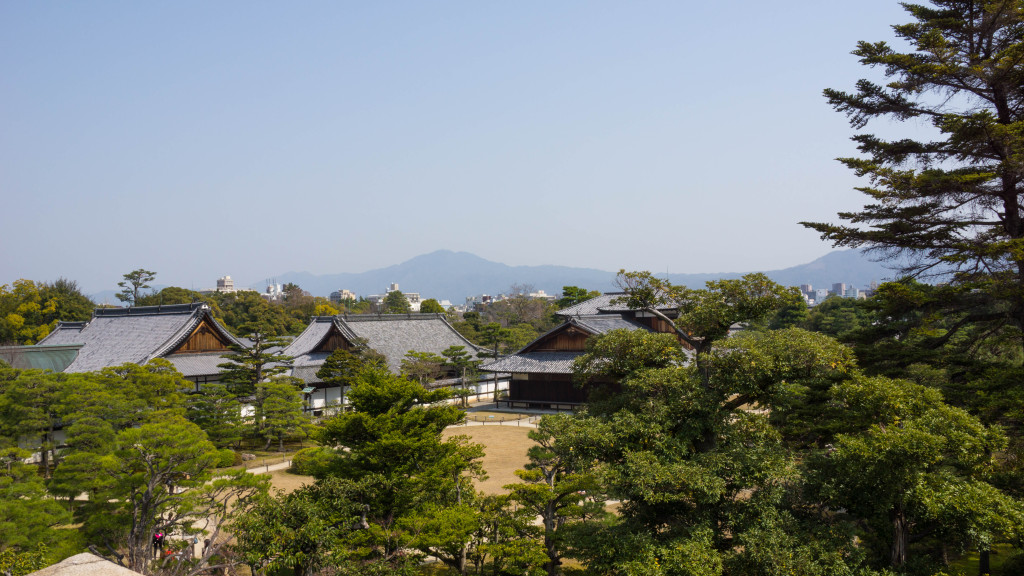
view from above on the castle walls
Have a Kyoto-style burger at one of the nearby local organic eateries, check them out and more details of the castle in my post: Kyoto Vegan Burgers & A Tour of Nijo Castle.
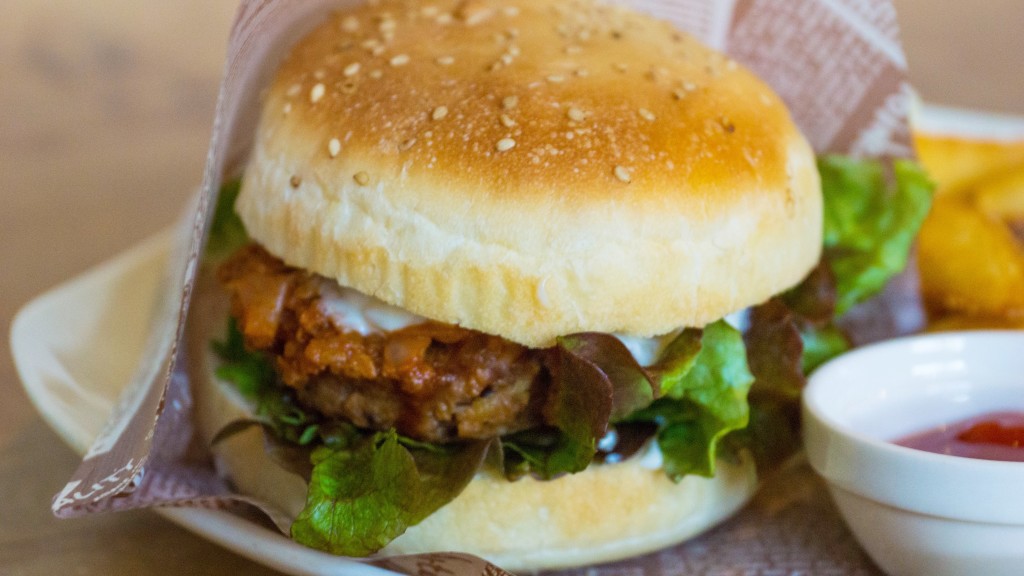
Handmade vegan burger at Morpho Cafe
Nishiki Market
After lunch walk the covered markets of Kyoto from Teramachi to Nishiki Dori, just south of the castle. This is the ideal spot to find souvenirs and delicious street food of all manor, with lots of shops offering handmade sweets and many traditional rice bran pickle (nukazuke 糠漬け) shops with giant barrels of their wares. Enjoy dinner at Mumokuteki Cafe or Matsuontoko which are nearby, or just nosh your way through the markets.
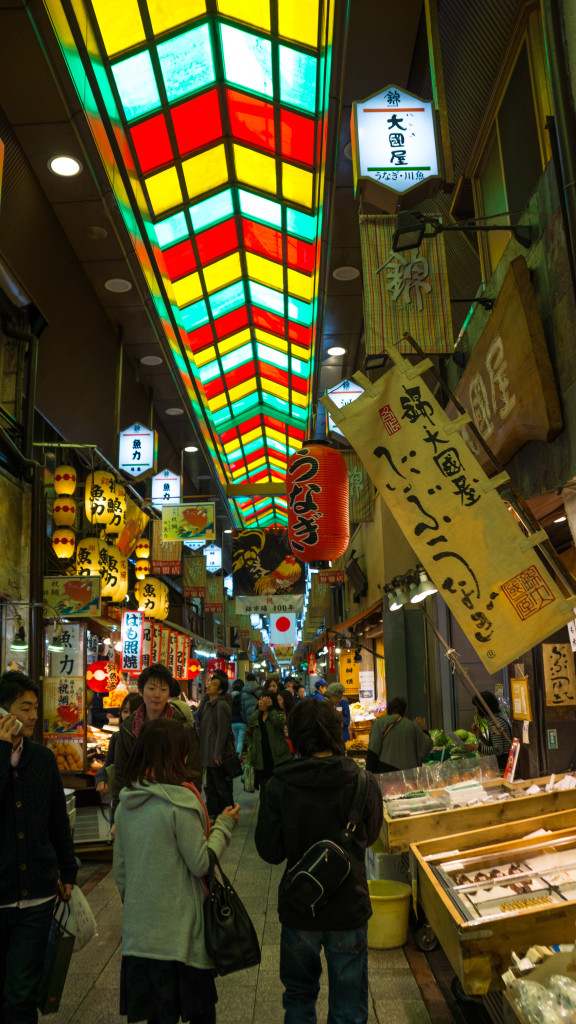
The famous Nishiki Market street
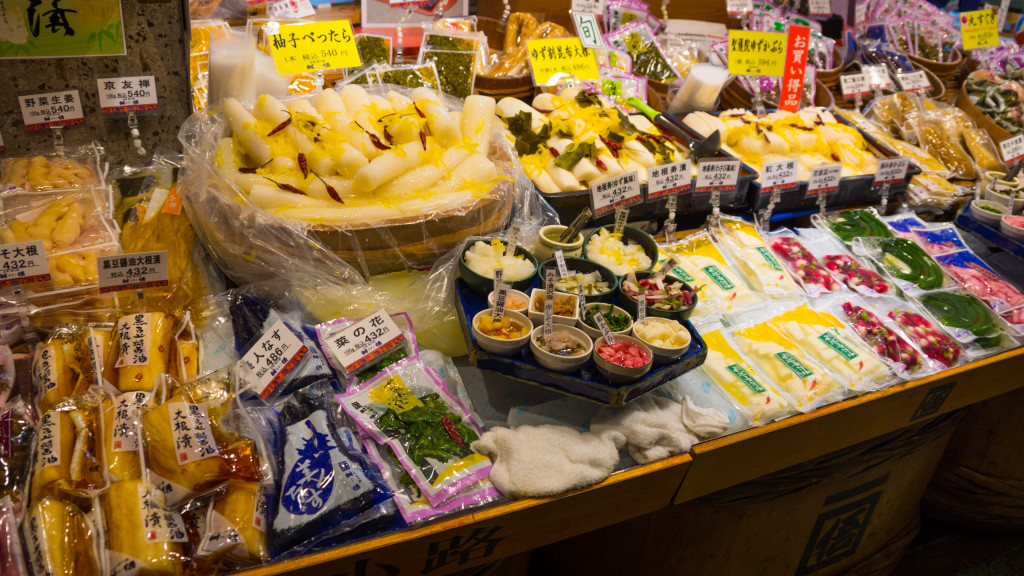
various traditional pickles at Nishiki Market
Day 3: Eastern Kyoto
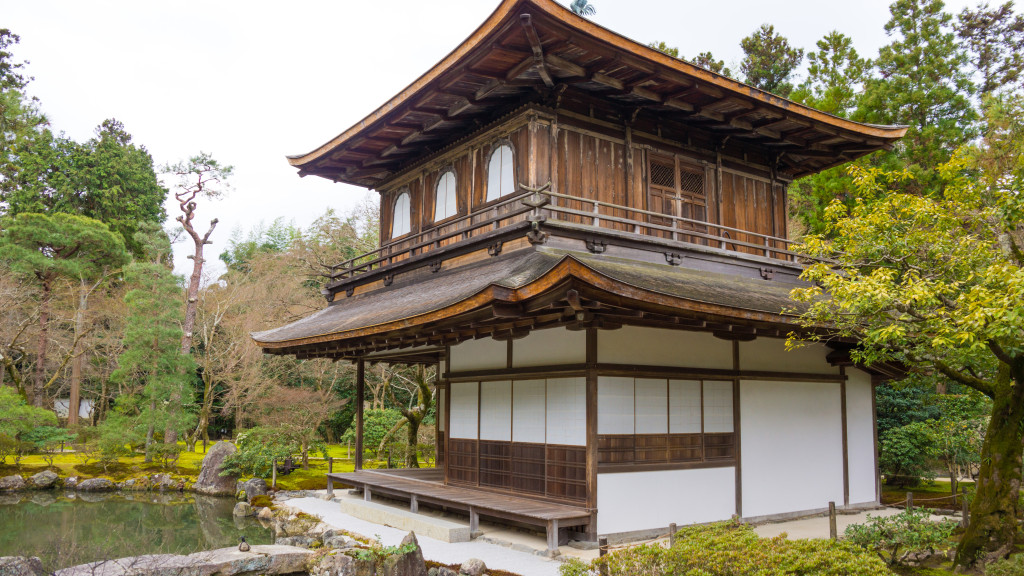
Silver Temple Pavilion in Eastern Kyoto
Silver Temple Pavilion (Ginkaku-ji)
First stop is at the Silver Temple Pavilion (Ginkaku-ji) which unlike it’s sister temple, was never covered in silver as planned. It’s no matter because the sand sculptures, gardens and bamboo grove are marvelous. The view from the top of the path of the city spread out between the mountains is breathtaking. This is one of the most famous spots in Kyoto so expect a big crowd!
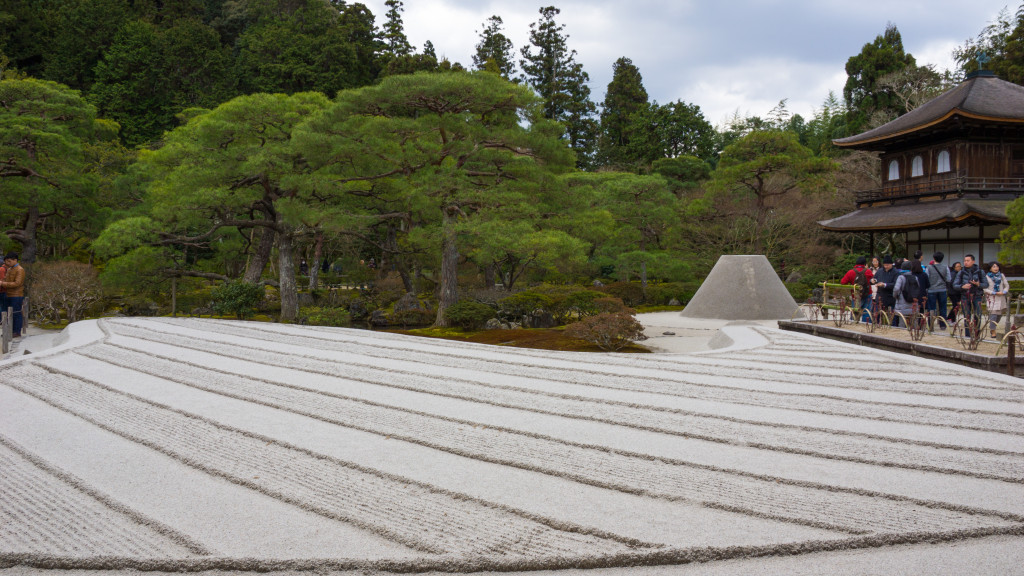
sand sculptures, the center mound represents Mt. Fuji

view of the city from the path above Ginkaku-ji
After the Silver Temple, stop by Omen for the best udon noodles the city has to offer. Traditional Japanese-style noodles are a must have while visiting Japan! This was one of the most delicious meals of our trip and we went to their second location for another taste. Luckily they have an English menu and can also accommodate vegans or vegetarians by offering a fish-free vegetarian stock for the dipping sauce.

Omen noodle shop in the Higashiyama district

fresh udon (wheat) noodles
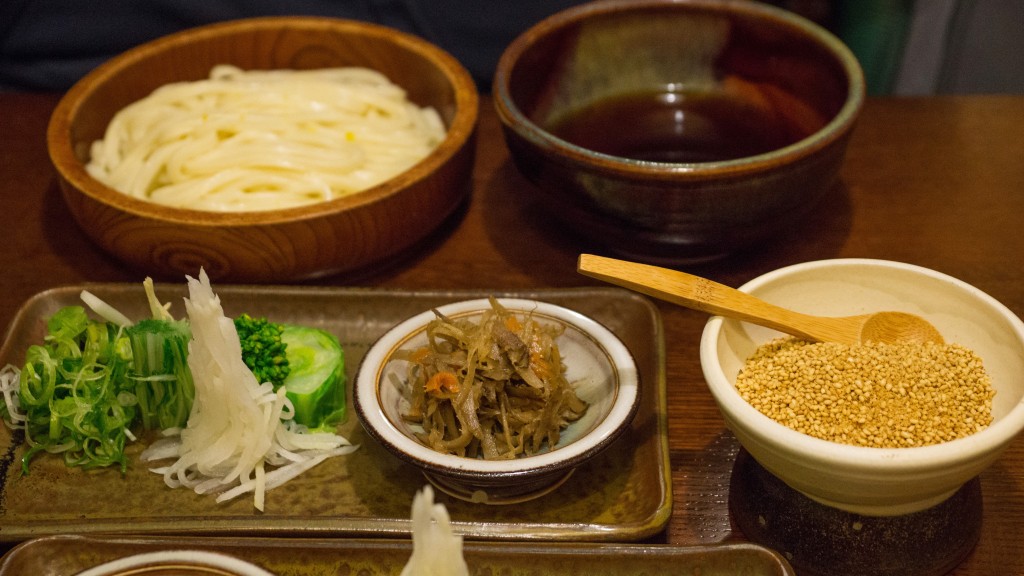
udon noodle lunch set with local vegetables & fish-free dipping sauce
Philosopher’s Path (Tetsugaku no Michi)
After lunch walk the picturesque Philosopher’s Path which is covered in cherry blossom trees that bloom in spring. Along the path signs will lead you to the other temples of the Higashiyama district, and some of the best shopping in the city. The Philosopher’s Path stretches from the Silver Temple to Nanzen-ji, where you can climb to the top of a red brick aqueduct still in use today!
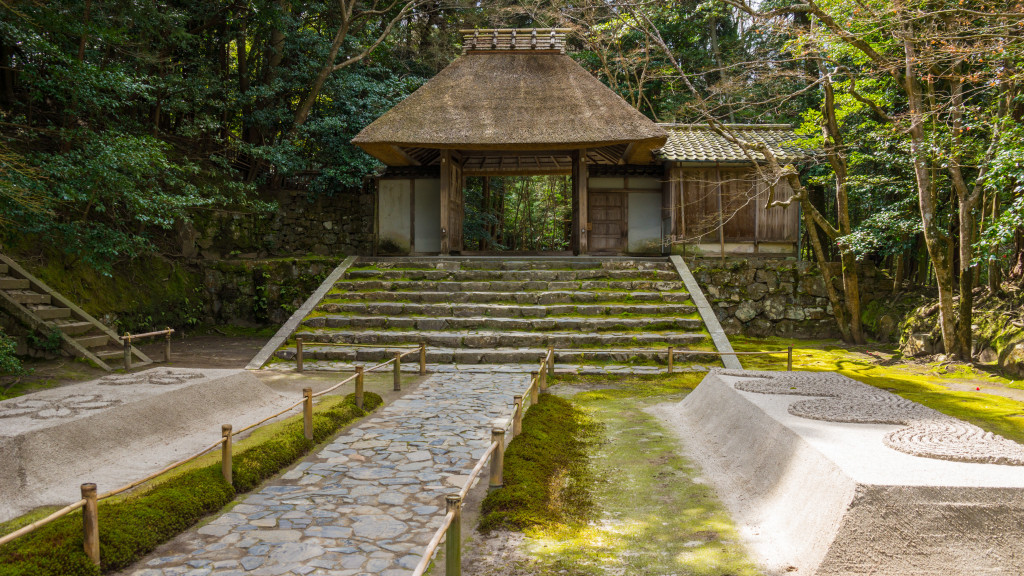
Honen-in Temple gate with purifying sand mounds
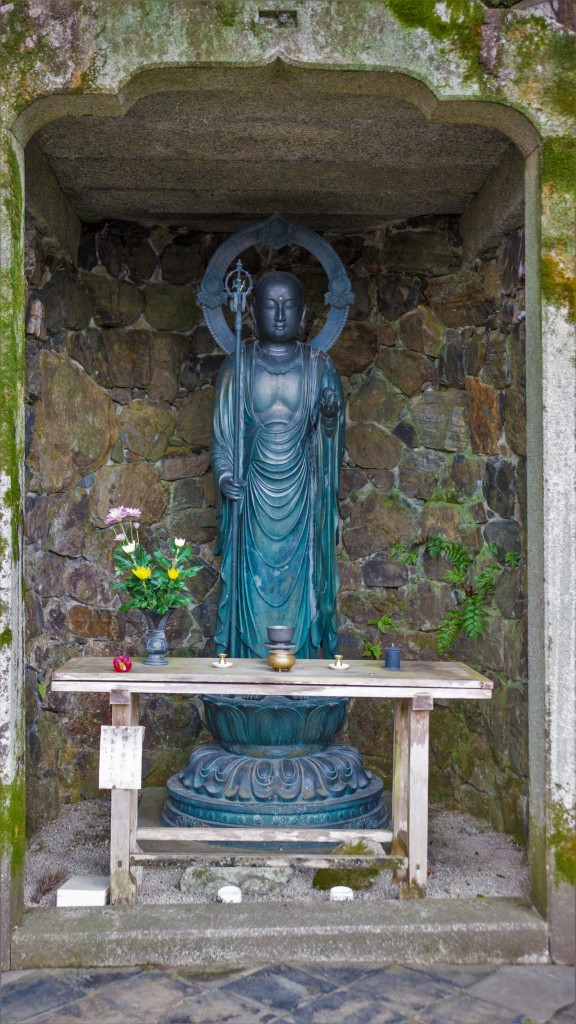
Buddha in the mountainside at Honen-in Temple
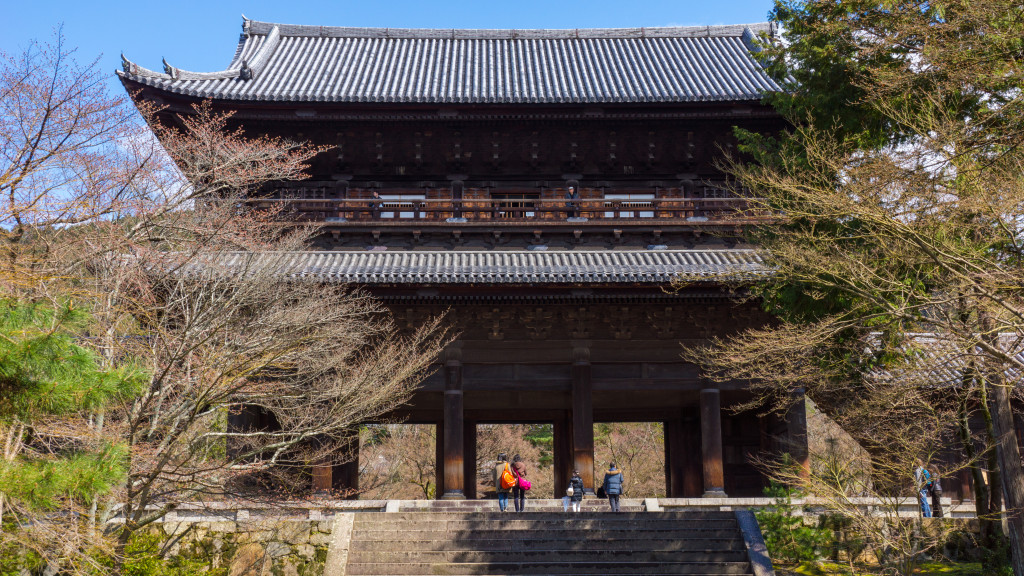
gate to Nanzen-ji Temple at the end of the Philosopher’s Path

famous red brick aqueduct at Nanzen-ji
For more information on lunch at Omen or about the temples along the Philosopher’s Path, see my tour here: Omen Udon Restaurant Kyoto & The Philosopher’s Path.
End the day at Gion, the infamous geisha district of Kyoto! Around dusk you might even catch a glimpse of a geisha or maiko (geisha-apprentice) on her way to a performance.
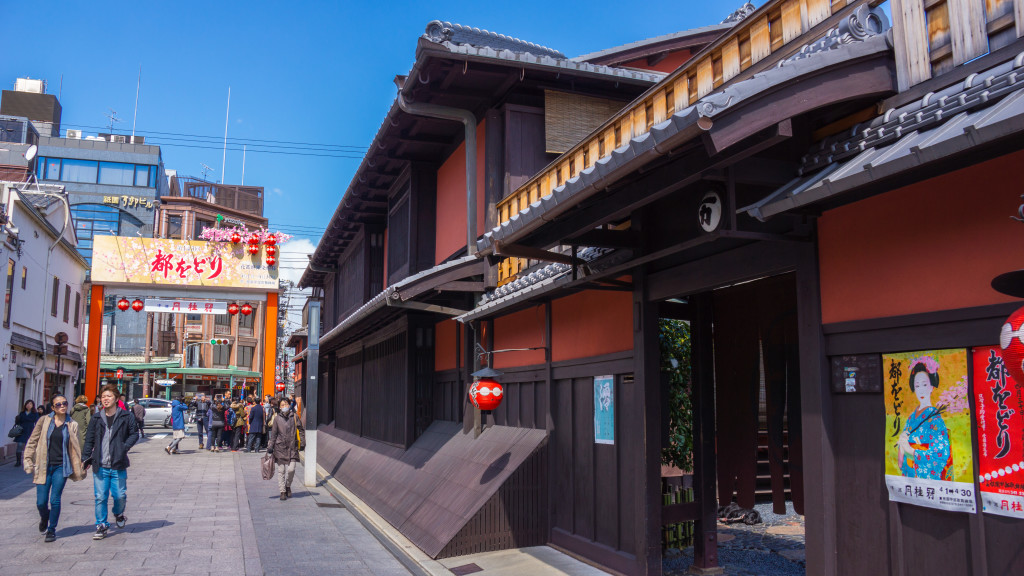
Gion District
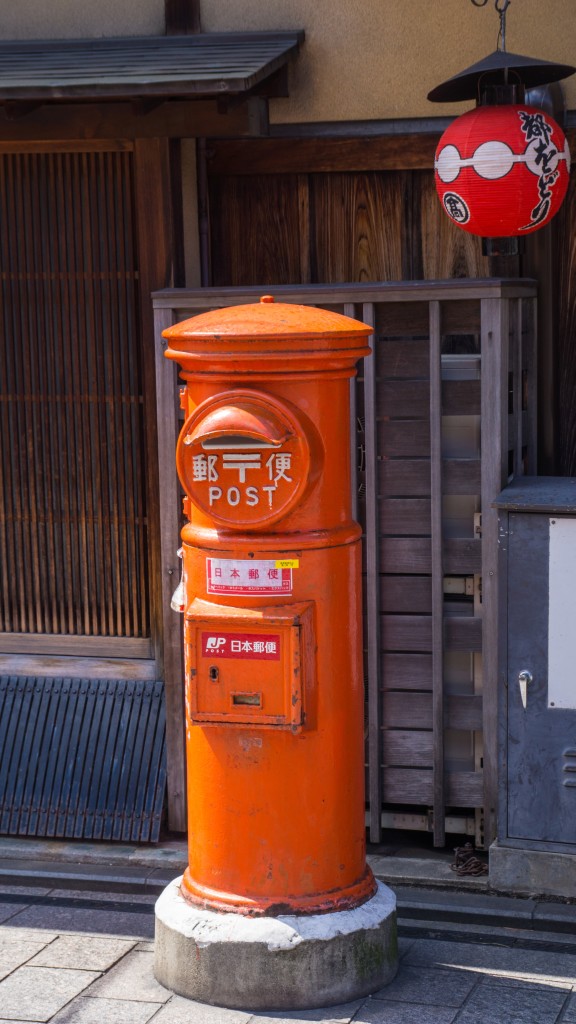
mailbox in the Gion neighborhood of Kyoto
Day 4: Day Trip to Nara

curious deer in Nara, Japan
From Kyoto Station take the JR line train to Nara, an easy one hour ride with views of the countryside. Nara was the ancient capital of Japan before Kyoto, in the aptly named Nara Period. This ancient city is truly unique, and is a must-see for any visitors to Japan!
Have lunch at Kinatei, just a short walk from the Nara train stop. The owner of Kinatei is one of the friendliest people we met in Japan and she just loves to chat with her guests. She takes pride in making traditional Japanese vegetarian lunch sets of local organic ingredients, and she is infamous for offering rides to her guests to the main sites of Nara.
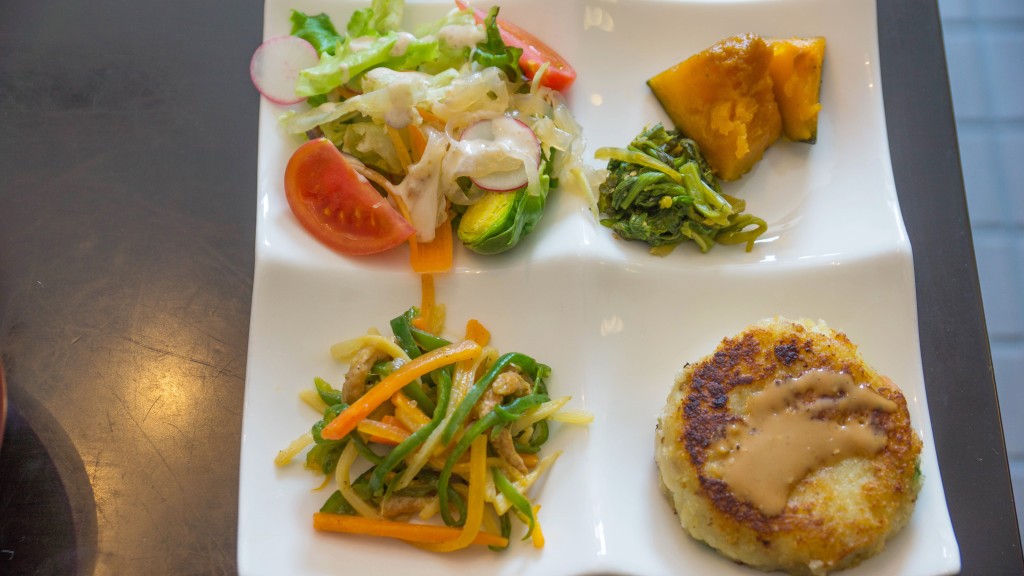
lunch set at Kinatei vegetarian cafe
If you’d like to see more of our lunch at Kinatei or the sights of Nara, check out my post: Kinatei: Organic Vegan Lunch Set in Nara.
Nara Park & Kofuku-ji Pagoda
Fueled up after your lunch and good company, walk Nara Park and see the deer! Nara is known for it’s wild deer, which will bow for treats and take them from your hand! Just seeing troves of these adorable deer walking the streets and resting in the shade under 7th century pagodas, is amazing. Follow the signs up to the Kofuku-ji Pagoda.
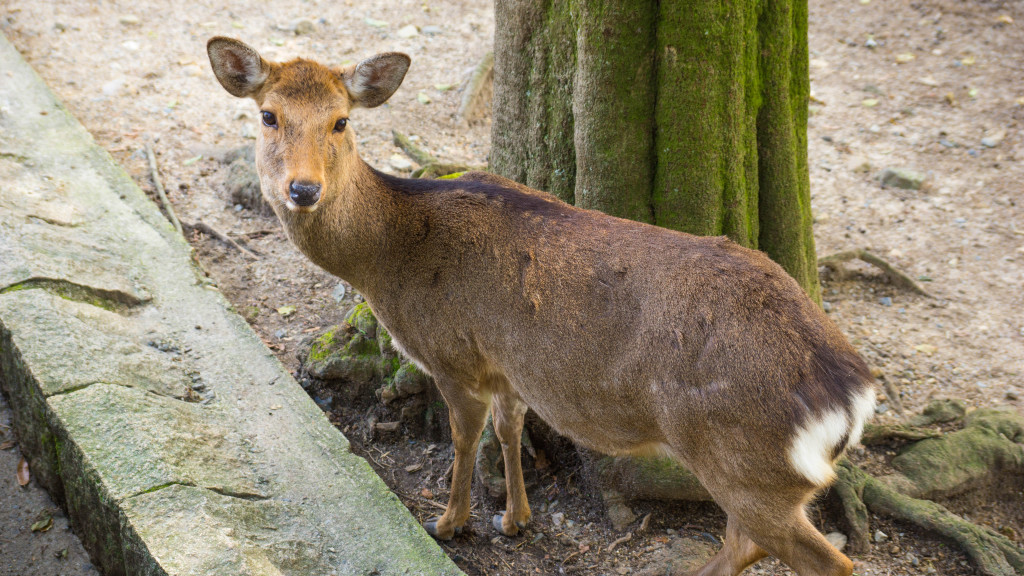
deer in Nara Park

docile deer in Nara Park

Kofuku-ji Pagoda
Eastern Great Temple (Todai-ji)
The most important site in Nara is Todai-ji or the Eastern Great Temple. This gold-horned building houses one of the largest bronze Buddha statues in the world and it will take your breath away. Offer some incense in giant cauldrons and walk a complete 360 degrees around this gargantuan relic from 752AD.

pathway to the main building of Todai-ji Temple
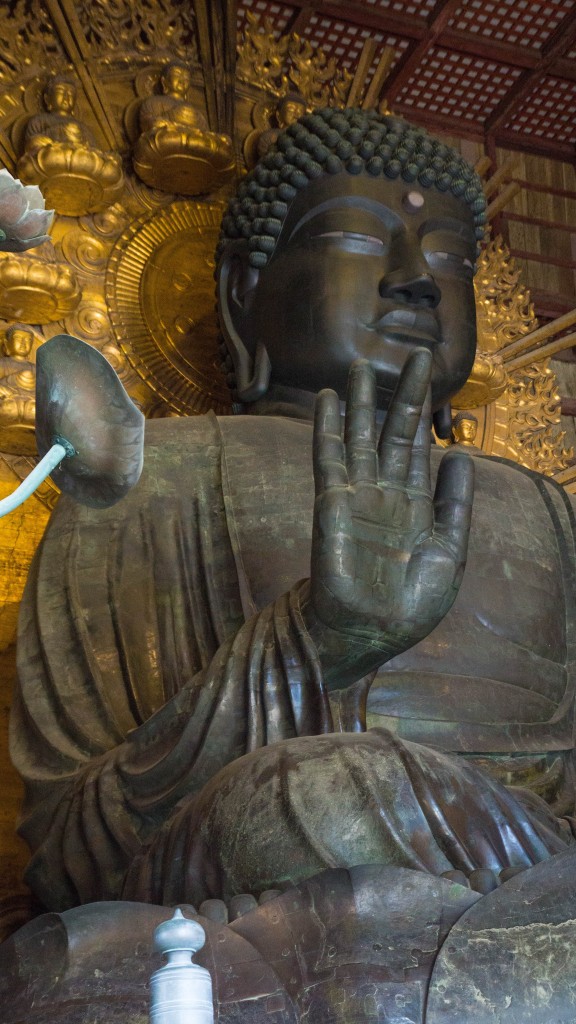
the Daibutsu (Great Buddha) of Todai-ji
As your day ends, walk back through the city to the station, and shop for some cute deer souvenirs or maybe a rice ball snack (or two!) to enjoy on your quick trip back to Kyoto.
Day 5: Southern Kyoto
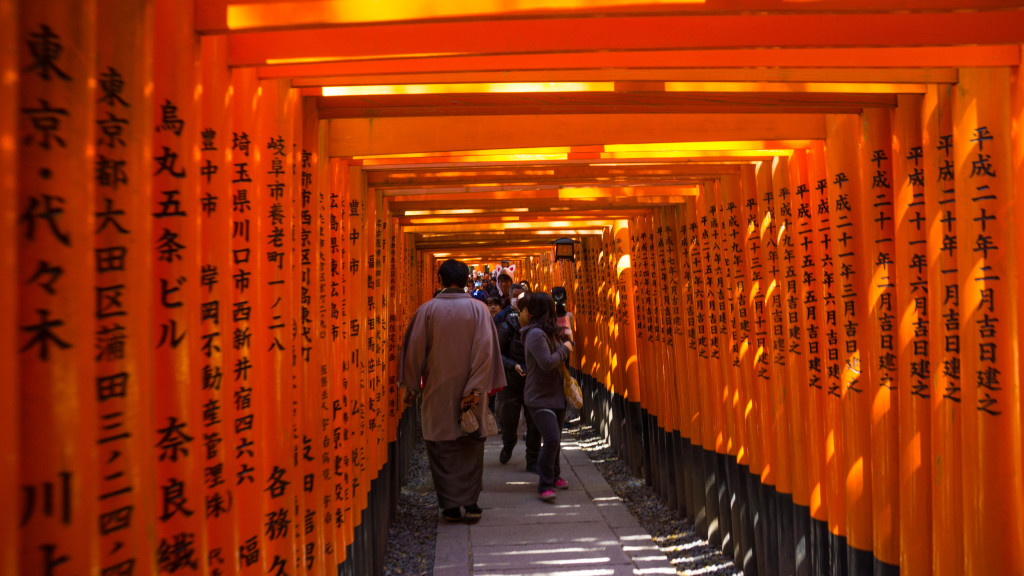
Fushimi Inari Shrine in Southern Kyoto
Pure Water Temple (Kiyomizu-dera)
Arrive early at Kiyomizu-dera or Pure Water Temple since it is super popular. As you enter, explore the ‘love shrine’ up a steep set of stairs to the left, just inside the main temple gates. Then make your way up a slight incline to the main temple buildings. From the temple platforms you will have a spectacular view of downtown Kyoto including Kyoto Tower. Afterwards, queue up to take a sip from the pure water spring which is said to have healing powers.

Entrance to Kiyomizudera
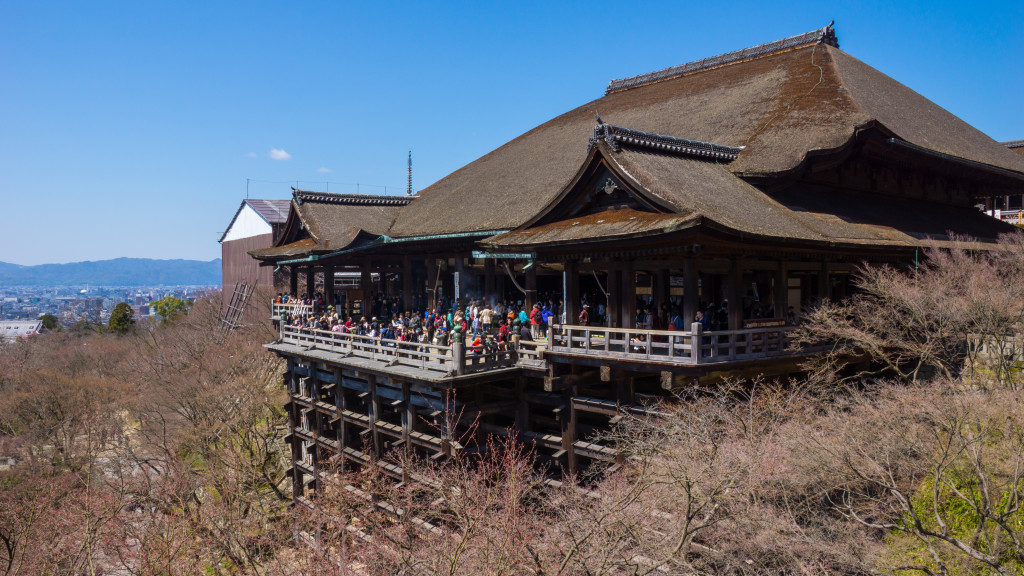
main temple platform at Kiyomizudera
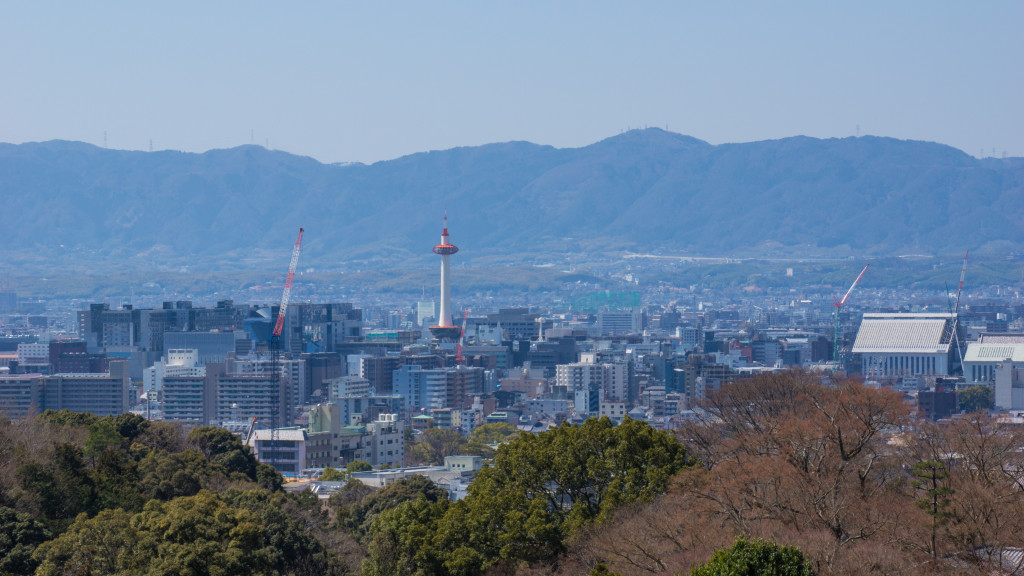
view from Kiyomizudera of Kyoto Tower
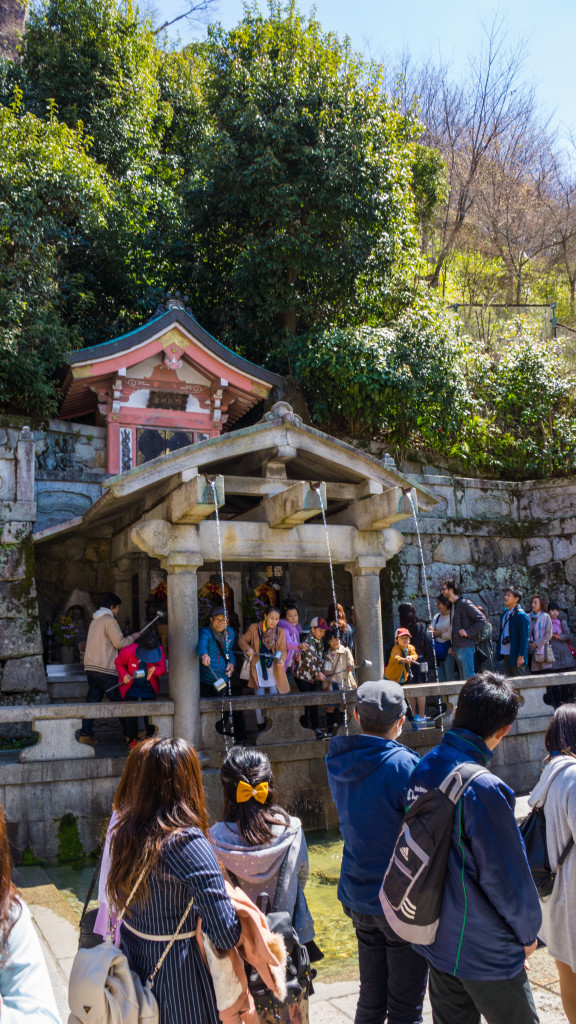
healing pure waters
Fushimi Inari Shrine
Take the local train to the Fushimi stop and then follow the signs to the Fushimi Inari Taisha, one of the most famous and iconic shrines in Kyoto. This Shinto shrine is known for it’s fox statues and endless rows of vermillion gates which wind up the mountainside. Plan to spend a few hours here among the orange gates, and dress for a hike if you want to make it to the top!
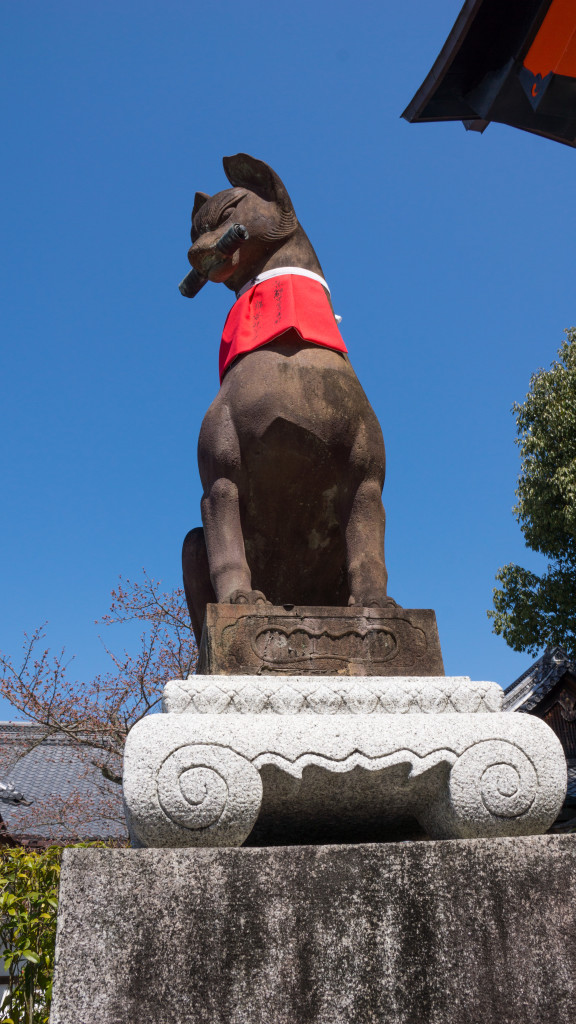
Fox guardians at the entrance to Fushimi Inari Shrine
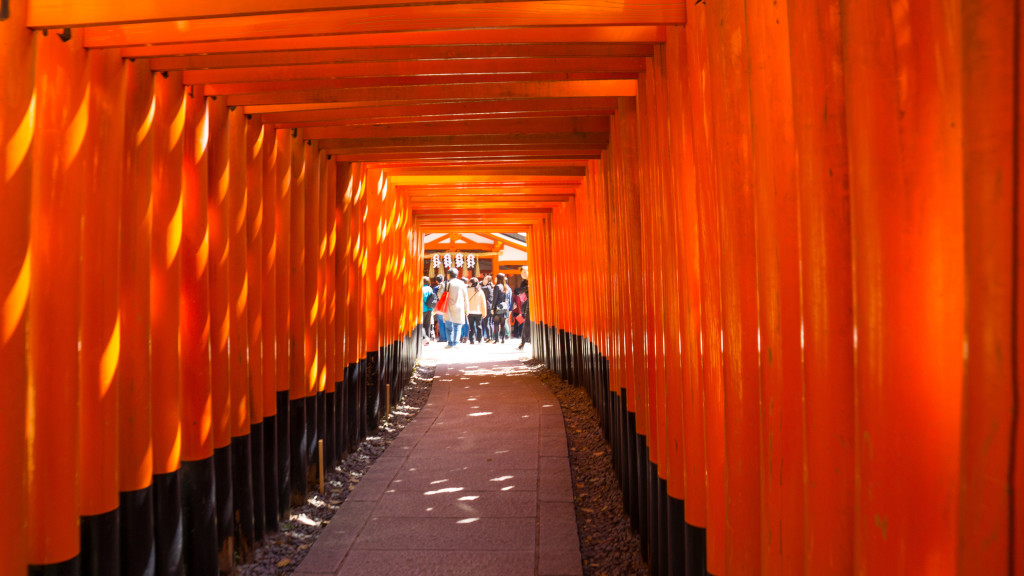
endless vermilion gates

getting steeper, orange gates wind up the mountain
For lunch walk 10 minutes through a charming residential neighborhood to Vegans Cafe & Restaurant, my absolute favorite restaurant in the city, hands down! While this place is vegan, it’s ‘yakiniku’ inspired roasted soymeat will please everyone. They also have amazing handmade pizzas with toppings like Japanese curry and the best soymilk shakes I’ve ever had. Everything is organic and locally sourced!

large roasted soymeat bowl with scallions and chili threads
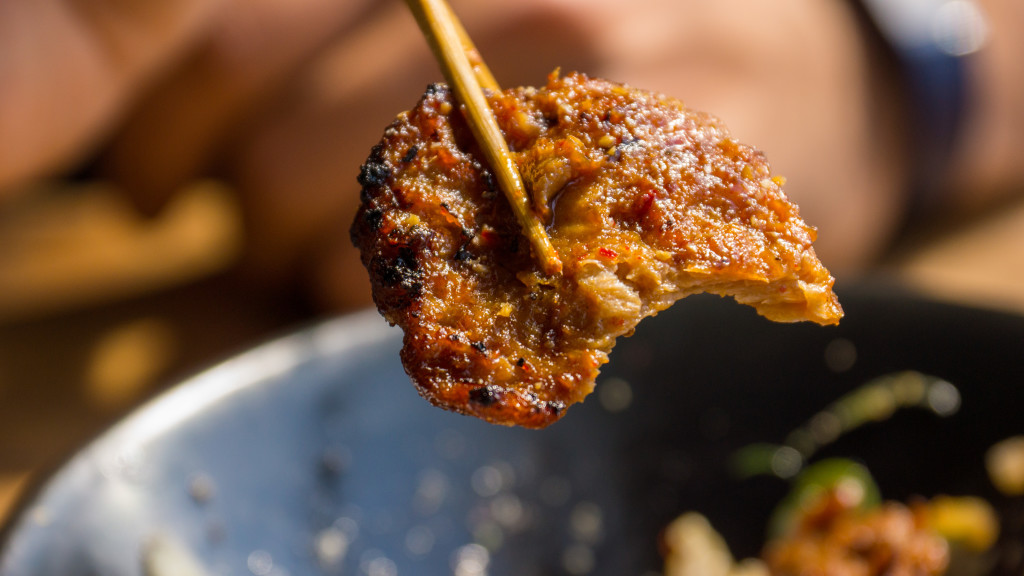
roasted soymeat close-up

green tea (matcha) soymilk shake
For more on Vegans Cafe and for a tour of Fushimi Inari Taisha, check out my post: Vegans Cafe Kyoto & Fushimi Inari Shrine.
Toji Pagoda
After a super satisfying lunch that will make you want to never leave Kyoto, take the train back to Kyoto station and walk to Toji Pagoda to assuage your impending nostalgia. Toji is the largest pagoda of Kyoto and the symbol of the city (it’s even featured on the Kyoto city mascot). Built in the 8th century, it’s 5-stories and the gardens surrounding it are quite lovely. The annex buildings contain exhibits of ancient relics and sculptures.
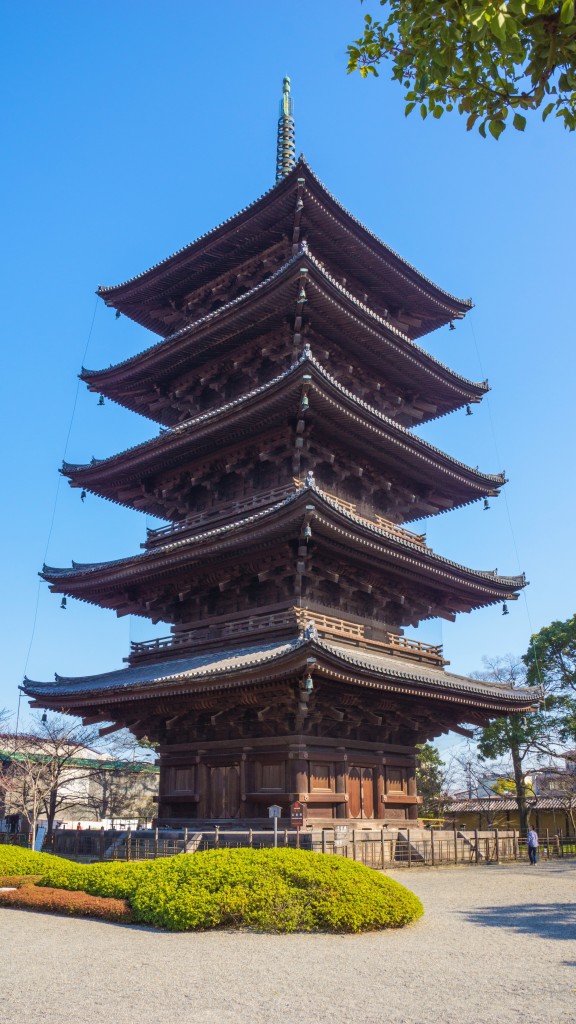
Toji Pagoda the symbol of Kyoto
Kyoto Tips & Tricks
Accomodations
There are many ‘western-style hotels’ available in Kyoto city, though I recommend staying at a Japanese-style inn or ‘ryokan’ for the experience. Check out Nishiyama Ryokan, I’ve stayed there twice and they have some English speaking staff who are used to accommodating foreign guests. This ryokan is also very conveniently located between Nijo Castle and Nishiki Market, and is near the two main subway lines. Nishiyama Ryokan also has private bathrooms in each guestroom (not standard in ryokan) as well as a public bath in the basement should you want to give it a try!
For the more adventurous traveler or for a longer stay, there are many listings on airbnb.com. This is a great option if you are a familiar with Japanese culture and the language.
Transportation
To plan your train and bus routes, I recommend the Jorudan site in English: Train Route Finder. All the ticket dispensers in Kyoto have an ‘English’ option, I recommend getting a Surutto Kansai Miyako Card that will work on all the Kyoto subway lines and buses. The only separate fare you will have to pay is the JR line fare to Nara. For more information on how to navigate the buses and trains of Kyoto, check out the Kyoto City website: Kyoto City Access.
Currency
Japan uses the Japanese Yen for currency, which is roughly 100 Yen to 1 US dollar. You can check currency rates on google or with your bank before departure.
Credit cards are still not widely accepted in Japan, so make sure to bring an ATM card without international transaction fees! 7-11 convenience stores all over the city have ATMs that work with foreign cards and have an English language option: Seven Bank ATM Locator. You can also withdraw at foreign ATMs at most major airports. Train stations will not have foreign ATMs and generally don’t accept credit cards.
Dietary Restrictions
For vegans or anyone with dietary restrictions visiting Japan, I recommend printing some cards in advance from Just Hungry as they will be very useful: Printable cards for communicating dietary restrictions in Japan.
BONUS DAY: Western Kyoto
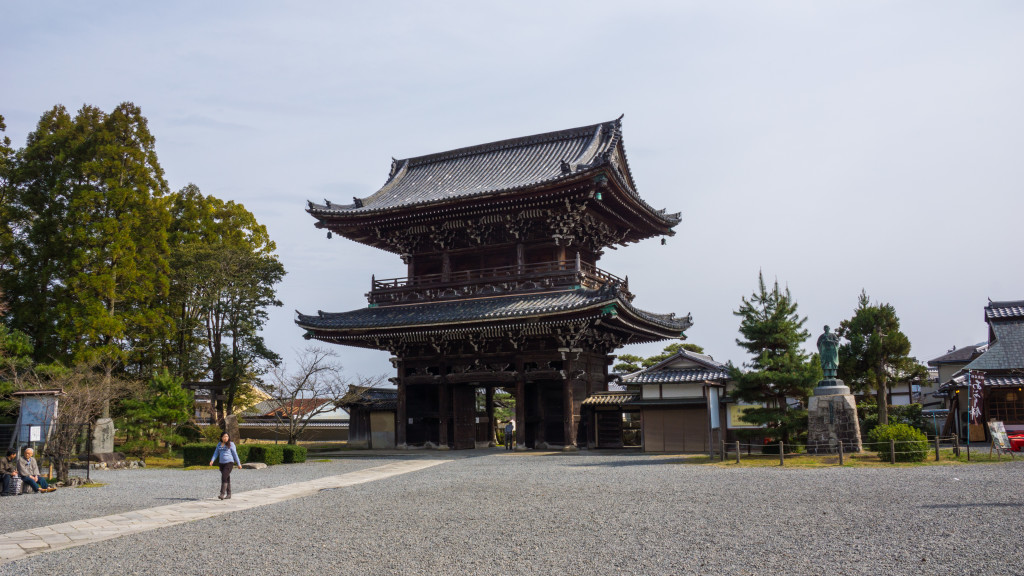
Temple entrance in Arashiyama in Western Kyoto
Moon Crossing Bridge
In case you have an extra day in Kyoto, don’t miss Arashiyama in western Kyoto! Take the Arashiyama Randen train right into the center of town. Walk to the river and see the Togetsukyo Bridge or Moon Crossing Bridge, the icon of Arashiyama. On the river you can grab a boat ride tour, which is especially beautiful in spring when the cherry blossoms are in bloom.
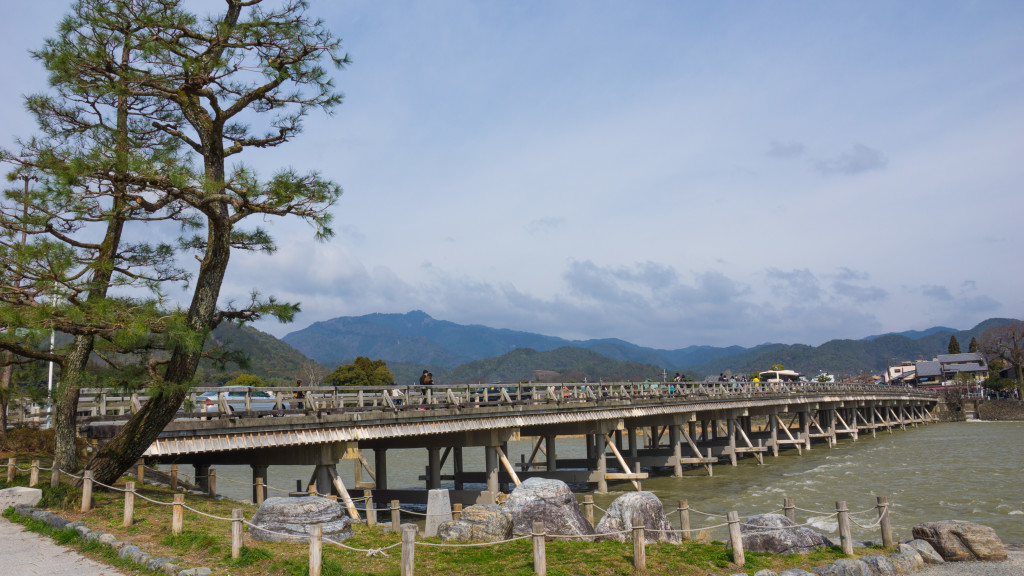
Togetsukyo Bridge, the symbol of Arashiyama
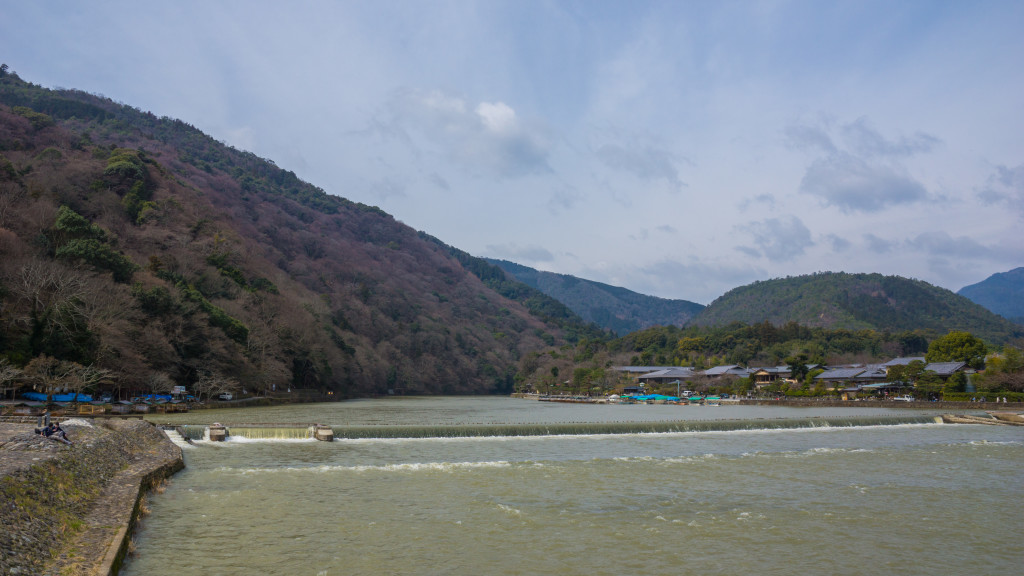
view of the river from the bridge
Arashiyama Monkey Park
Across the river climb Iwata Mountain to the Monkey Park for views over Arashiyama and lots of wild Japanese macaque monkeys! They even have a little pond to take a dip in, bring your camera but not any food…
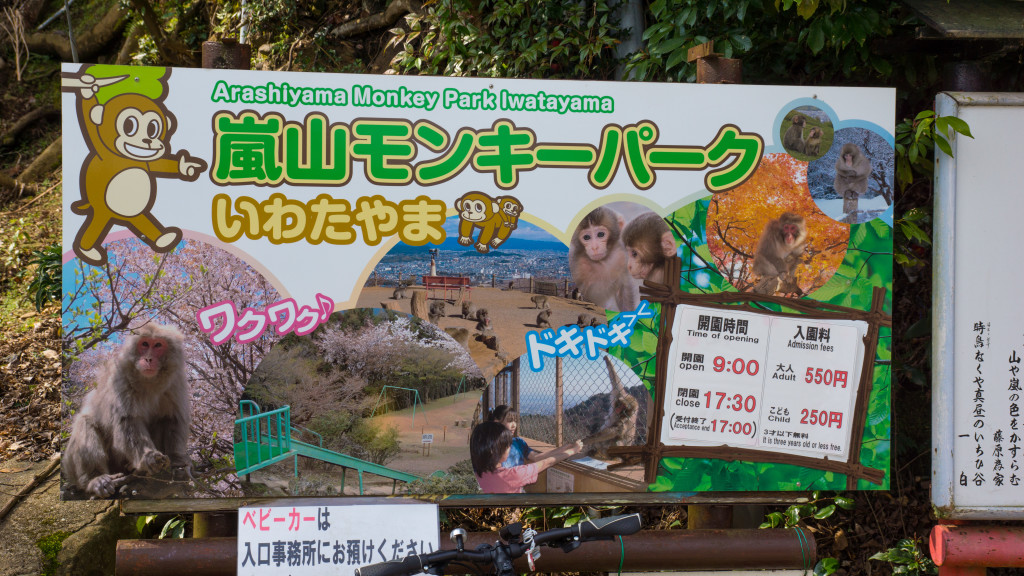
entrance to the monkey park!
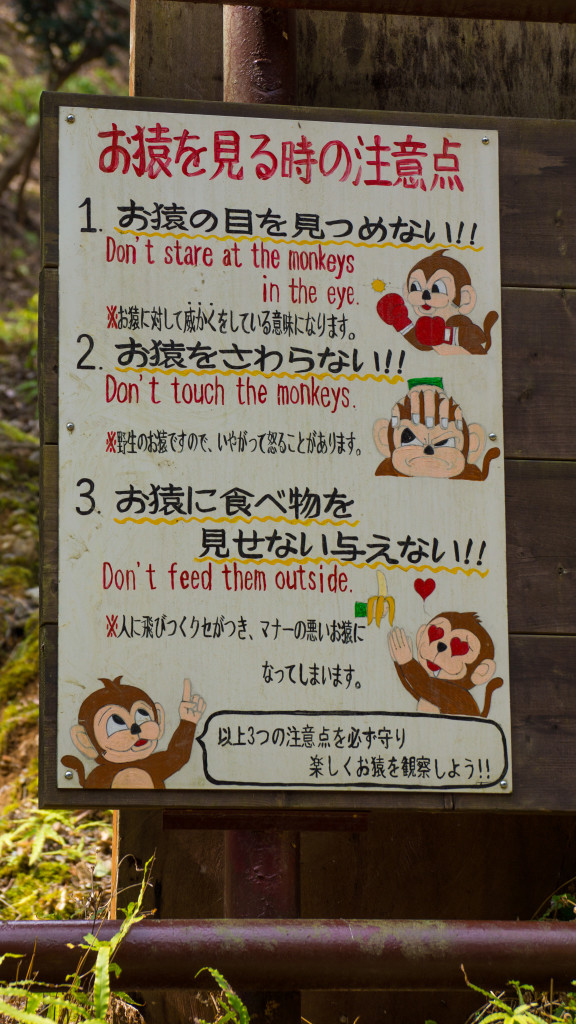
hilarious and adorable rules of monkey park…
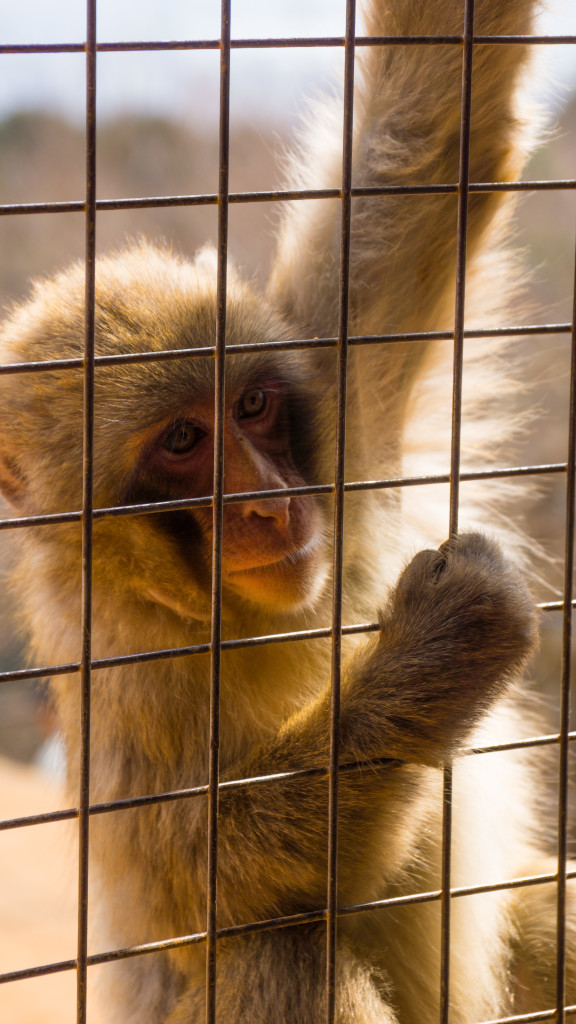
monkey clutching a peanut, you can feed them from inside a hut
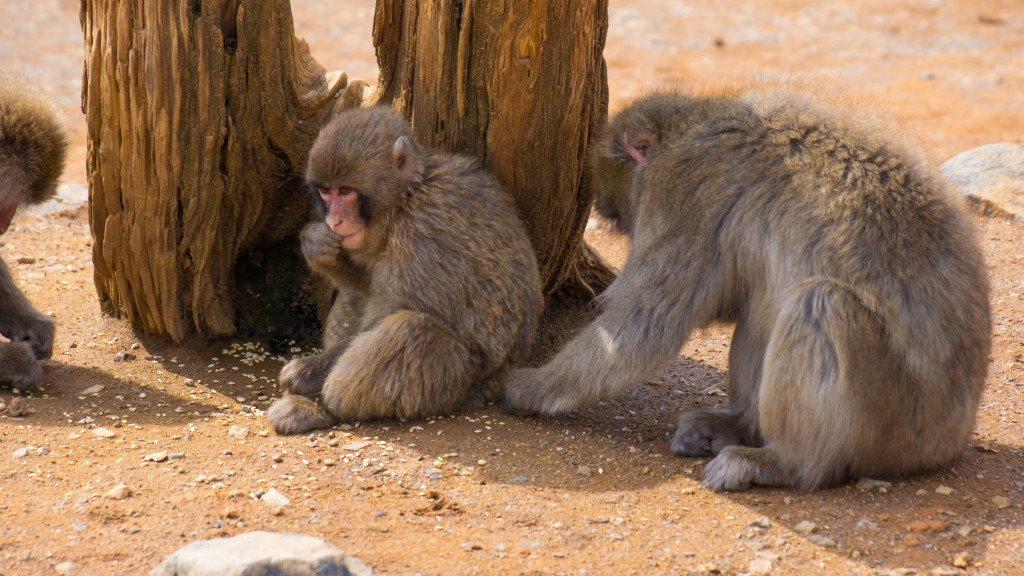
baby macaque and family
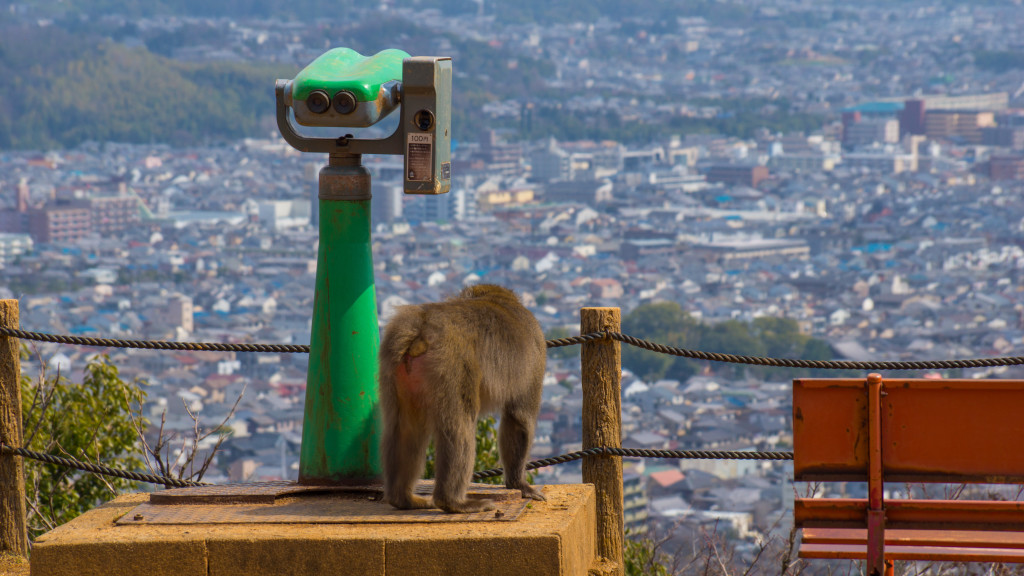
monkey with a view!
Tenruji & Bamboo Grove
Finally visit the most famous temple in Arashiyama, Tenryu-ji, a 14th century zen temple. Take your time strolling the halls before heading out to walk the gardens. Afterwards walk the scenic Arashiyama Bamboo Grove just outside the back gate of the temple.
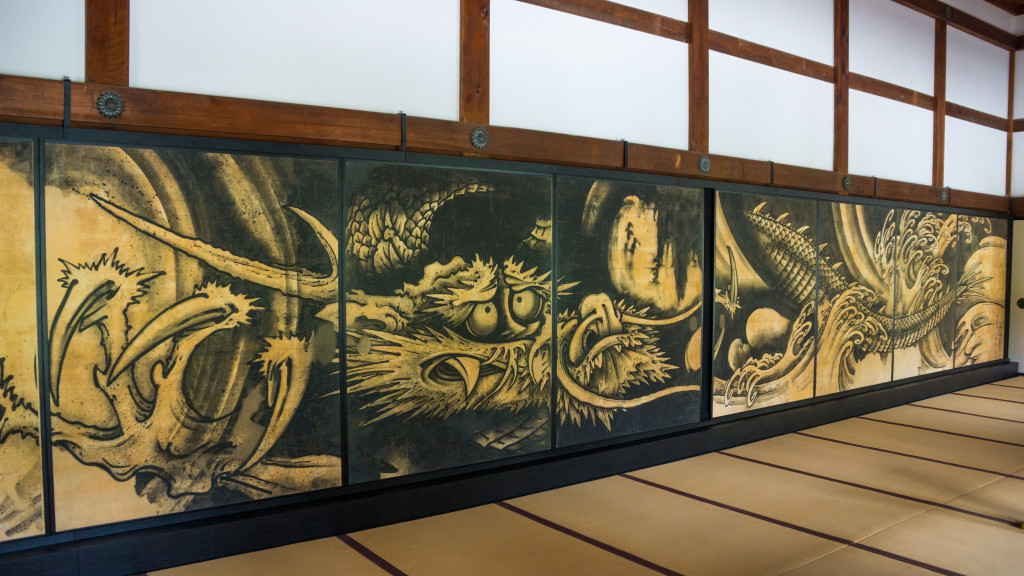
famous dragon screen painting at Tenruji Temple

gardens and guests in yukata
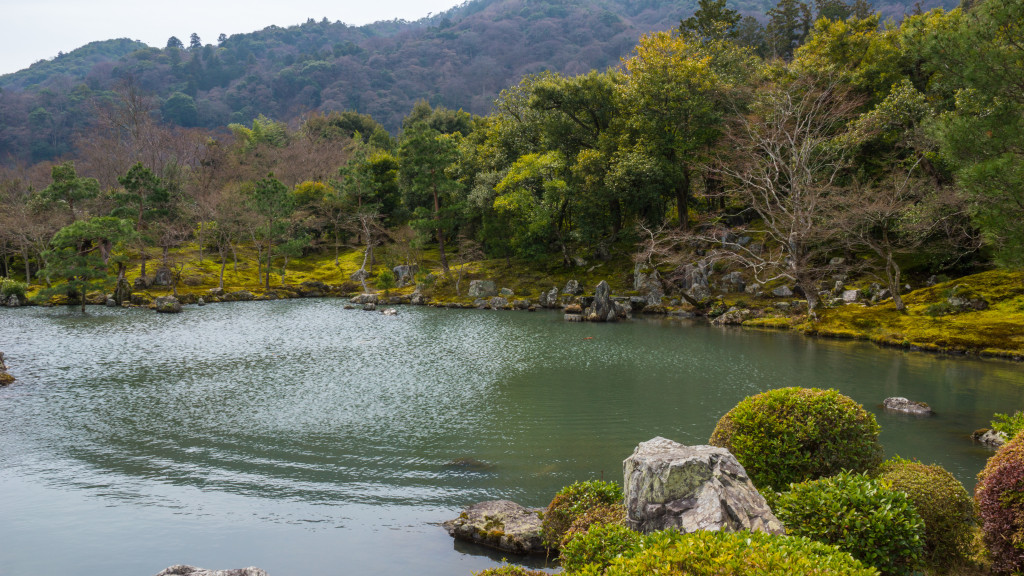
ripples in the pond

Arashiyama’s famous bamboo grove
I hope you’ve enjoyed this tour of Kyoto and that you enjoy your time in the city, it’s one of my favorite in the world, and I already can’t wait to go back! If you have any questions, please post them below, and I’ll do my best to answer them! Also let me know if you use this guide or find it helpful.
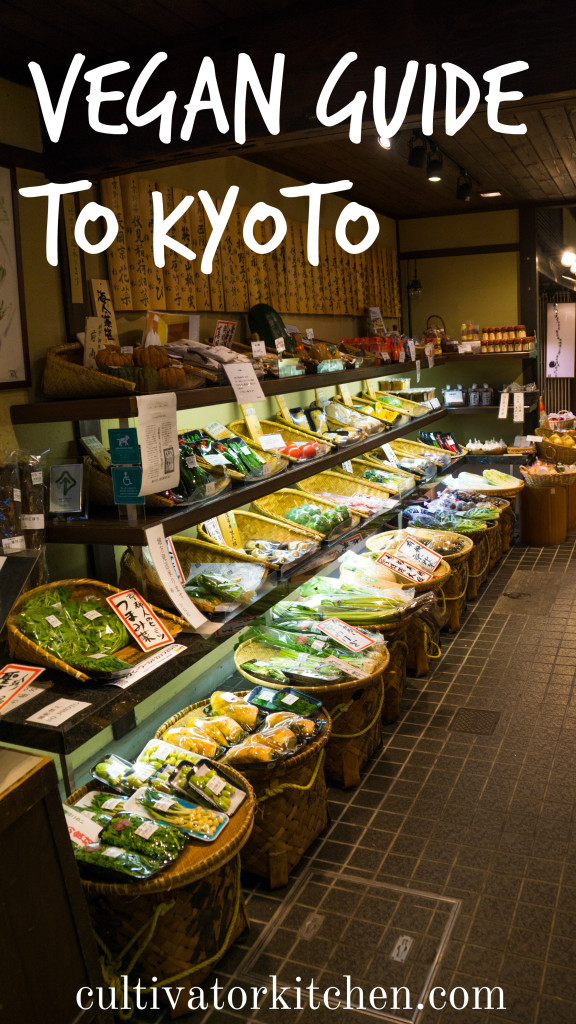
Have you been to Kyoto? What was your favorite place you visited?
This is written well with wonderful personal insight. This post made me believe I could easily negotiate a visit to Kyoto. The pictures made me want to see more.
Thank you so much!! Check out my other 5 Kyoto posts for more inspiration! I hope you get to go one day. 🙂
So Beautiful
I hear Kyoto is calling me ♡
Thank you so much!! 🙂
This was great to read. I’ve been to Japan twice as a vegetarian, but now that I’m vegan, I was thinking a trip there might be difficult with the food. Sounds like you’ve found a few great spots, so next time I’m there I will have to visit them too!
Awesome!! I hope you get to go! It’s quite easy to be vegan in Japan if you know what to look for. 🙂
Very handy to have this guide. Many thanks!
Isabel
You’re so welcome! Thanks for stopping by! 🙂